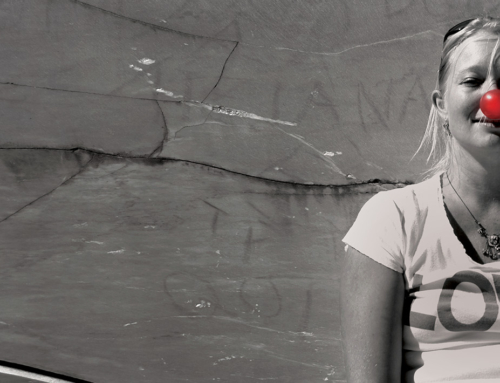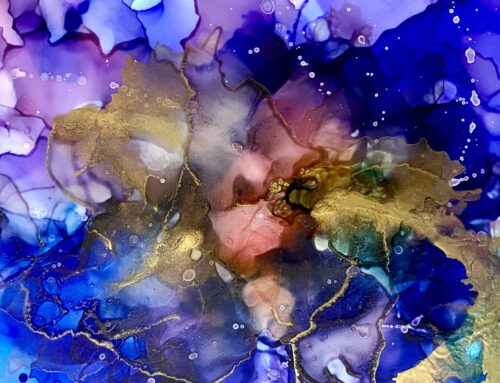For some time now, I have spent mornings writing, or probably more accurately practicing what I call a “brain dump.” I sit at the keyboard and tap out whatever is floating around inside. Some days I’m not at my keyboard and will pick up a notebook and scribble away. Today’s scribbling though was captured on little post-it notes. Which is ironic because what came flowing out had something to do with the tools in my toolkit necessary for navigating life. Mental note to self… when committing to writing each morning, keep larger paper at hand.
In my own journey, part of attending to my life, of being open to and opened by life, has been the compulsion to capture it on paper. Writing it down compels me to expand myself even further because it is a tool for self-honesty, self-expression and for clearing the way for unfolding wholeness and healing, bridging my inner and outer lives. So, back to my toolkit for navigating life.
Aren’t most experiences in life an opportunity to notice what I have in my toolkit? When have I seen my life rearranged through unexpected choices by others, or found myself living in a giant question mark? What are the things required of me during the times I feel most lost or in the dark about my next steps? Do I even know if I am equipped to move through some of the most challenging things? I look down at the tool belt hanging from my heart, and with every question, I wonder if I have a toolkit that will support me, guide me, heal me and expand me.
As questions swirl around, I am reminded of the bookcase I was putting together a few weeks ago. I open the box and lots of pieces come out, each labeled (hopefully) with a sticky dot with a letter on it. The manufacturer is assuming this makes assembly quite easy and painless for me. I believe they think all I need to do is match letters to each other, or in a particular order depending on the instructions, which always include a “crystal clear” schematic of how to successfully build my bookcase. Yeah, right.
The enclosed information almost always begin with: Please read all instructions before beginning assembly. The illustrations provided allow for easier assembly when used in conjunction with the assembly instructions. Yeah, right. This is usually followed up with warnings about checking everything in the box with the list of parts included, something about the dangers of using power tools, and a suggestion to save all your packing material. Save all my packing material? This last warning generally doesn’t give me a sense of confidence.
Then comes the list of hardware included and tools I’ll need, which generally includes some variation of these items: Spring washer 1/4mm – 6pcs, Lock washer 8+1 extra, #3x20mm – 22pcs, 4mm Allen Key – 1pc, 2 each Shelf Pins and Retainer Pins, 2 mending plates, as well as various other accouterment that I’ve never heard of, but won’t be able to build my furniture without. Not included: Phillips head screwdriver, Flat head screwdriver, hammer or mallet, etc. You get the picture.
Finally I get to start putting the bookcase together, following the instructions very carefully for maximum efficiency and ease. They usually read something like this: Connect the Bottom Panel (B) to the Left Side Panel (C) by aligning the pre-drilled holes on the cleats of the Bottom Panel (B) to those of the Left Side Panel (C). Secure by inserting an Allen Bolts (G) through a Spring Washer (H) and a Flat Washer (I) through the pre-drilled holes on the cleats of the Bottom Panel (B) and into the pre-drilled holes of the Left Side Panel (C) using the Allen Key (F). Yeah, right.
This is of course assuming I have all the pieces-parts referenced. And now is the time when I get a cup of coffee because I realize it’s break time. And I need to ferret out the tools “required” to make the Shelf Pins and Mending Plates work properly (whatever those are), because the Allen Key won’t work on them. It’s also about this time that I return with a butter knife to fulfill my “required tools” list. In 30 years I have put together dozens of DIY furniture, but I have never seen a butter knife listed as a required tool. I don’t understand this – it is the quintessential, all-purpose instrument, and should be a requirement for every toolkit!
Besides the obvious cutting and spreading, I’ve been known to use a butter knife as a flathead screwdriver, a light hammer (especially good for breaking the seal of unopened jars), as a pry bar for any number of things, removing gum or peanut butter stuck between piano keys and separating frozen hamburger patties. It’s handy as a bedroom door opener with no key for the lock, a caulk spreader, etching designs into clay, removing pet hair from clogged vacuum brushes, cutting shortening into flour for dough, and in a pinch it doubles as a mirror to check your teeth and lipstick when at a restaurant.
But the most ingenious use I have seen (haven’t tried!) is starting the car. Yup, that’s right. I watched a woman at a gas station fill her tank, get in her car, reach to the dashboard pocket above the glove box, pull out a butter knife, stick into the steering column, twist it, and the engine roared to life. She put the knife back in its rightful place in the dashboard pocket for easy access I imagine, and zoomed off. She clearly thought this was completely normal and practical – I was in awe at the creativity.
And so it is with my life. Do I have a butter knife hanging on my tool belt? And what exactly does my butter knife look like? While it has a myriad of uses, my “butter knife” is the bridge of my inner and outer worlds. It is a living tool that allows me to live as closely as possible to my experience inside – by neither spreading pink frosting on it, nor disappearing into a dark cave of hopelessness, but breathing somewhere in between. It is the hardware that keeps my soul and heart aligned with the soul of the world when I think that I am a missing piece of a living puzzle.
Through grief, disappointment, and the unexpected rearrangement of things and people I have loved in life, I realize that just as the wind has worn canyon cliffs, and water has smoothed river rocks, so too am I molded by what I think separates me. What I thought was against me, is really what makes me belong to you. My butter knife is whatever allows me to know that we are joined to one another and to the source of life, the way a drop of rainwater joins the ocean. It is the bridge that frees me.
With every heartbreak, with every moment of jubilation, my butter knife is the required tool for affirming that I am indeed, you – and you are me – that I am a piece of a puzzle needed to put the world back together. Our stories fit together beautifully, although I can’t always see it, and every torn piece from my struggles, is joined together with yours in order to complete the picture.
So what will I use my butter knife for today? What form will it take as I navigate life? I don’t always know, but I will continue searching for new and infinitely creative uses for my “butter knife” for clearing the way for my continued expression of wholeness. Every challenge, every life experience is here to awaken me to that divine ocean, of which I am a drop, and my “butter knife” is that holy gift used to support me, guide me, heal me and expand me, bridging my inner and outer worlds.





